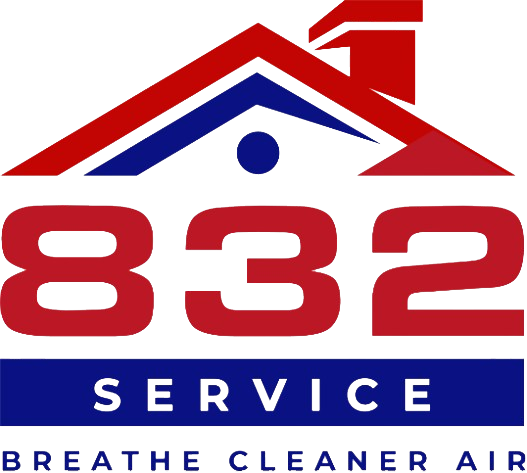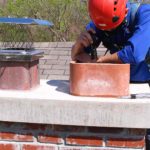Chimneys are an iconic part of many homes, particularly those that have fireplaces. To lifeless architecture, they impart character; during the colder months, warmth and in general contribute to a sense of coziness. Although they are pretty, Chimney cleaning can also lead to major issues if not taken care of. A chimney cap is one of the best tools to prevent everything mentioned here, otherwise get in touch. This basic but important constituent helps to stop many trouble tickets from developing in a way that could result in expensive repairs and even certain hazards.
What Is a Chimney Cap?
To understand how a chimney cap stops major issues, we have to start with what exactly is a chimney cap. Chimney Cap: A chimney cap is a metal cover that sits on the top of your chimney. Normally, it is with a wire mesh enclosing the top of the flue opening. A chimney cap is typically made from stainless steel, copper or galvanized metal — these caps wear many hats (so to speak) and are all designed with one common goal: providing your fireplace protection.
Why Every Chimney Needs a Chimney Cap?
1. Rain and Water Damage Protection
Water is one of the biggest enemies to a chimney sweeping in general. Rainwater In An Uncapped Chimney Can Lead To Trouble The moisture can combine with creosote, a wood burning byproduct in the chimney flue to form an acidic mixture that over time will eat away at your chimney liner. Furthermore, a build-up of moisture over time can cause the damper or fireplace insert to rust through and not function properly together.
2. Preventing Animal Intrusions
Animals like birds, squirrels and small mammals also see an open chimney flue as a comfortable place to create their own little home. Chimney flue with blockage of bird nests. In addition, animals that become trapped in a chimney can create odors, sounds or even damage to walls from scratching and clawing while trying to get out. Wire mesh that is contained within a chimney cap blocks access by animals
3. Keeping Debris Out
An opened chimney will never escape from the leaves, twigs and other debrisIBUT Photo This debris can block the flue and your chimney will not have an optimal operation point or might even be a fire hazard. Debris blockages can also cause smoke and toxic gasses to back up into your home creating unsafe conditions for everyone inside. Installing a chimney cap will also keep any unwanted debris from falling into your chimney, thus keeping it clear and fully operational.
4. Reducing Downdrafts
Wind may occasionally result in downdrafts, pushing air down the chimney and into the home. This can cause smoke and ash to escape onto your premises, making it completely uncomfortable. A chimney cap is an important feature as it prevents downdrafts by offering a protective layer that will divert wind around the opening of your chimney therefore reducing air trying to be pushed down into the flue.
5. Minimizing Creosote Buildup
One of the most common issues that cause chimney fires is creosote buildup. It builds up inside the chimney by burning wood, then forms into a substance that looks tar-like. Over time, creosote will accumulate until it restricts airflow enough to cause smoke backing up into the home or even a possibility of chimney fire. Although chimney caps do not eliminate creosote buildup, they can help to reduce the quantity by keeping debris and moisture that can increase accumulation out of your flue.
Understanding the Role of a Chimney Damper
What Is a Chimney Damper?
Chimney caps keep all the bugs, birds, animals and rain out of your chimney but they do nothing to control or restrict airflow inside your chimney. Between the fireplace and a chimney is a movable plate known as Chimney damper. Simple to open or close with a lever, string or chain (the homeowner can control the amount of air that breezes through the chimney)
Importance of Chimney Dampers
A fireplace cannot operate at its peak efficiency without a properly functioning chimney damper. When it’s open, air is drawn through the chimney and smoke and gasses are extracted from your home as intended instead of circulating back in. Similarly, when closed the damper will keep warm air inside your home and assist in keeping a consistent indoors temperature aiding energy efficiency for heating. Another good thing about closing a damper when the fireplace isn’t in use, is that it stops animals and outside debris from getting chucked down your chimney too.
What’s the Purpose of a Witch’s Crook?
The Historical Context
Terrifying huh. The term “witch’s crook” sounds like something out of a Disney movie, when in fact it is just an architectural characteristic found quite often within the chimney itself. Witch’s crook -a bend or jog in the chimney’s flue, often added as a superstitious measure to avoid witches from potentially flying down the kitchen and side of your house.
Modern-Day Relevance
Though the reason for its witchily crooked look was once connected to folklore, this detail can be operationally applicable at present. The flue bend can be used to escape wind and downdrafts which in general help improve the overall draft of the chimney. Miters and witch’s crooks were once an important way of accomplishing this, but in modern chimney construction most ways to avoid having to build a large brick structure is just another odd mystery from the past that has been solved.
Chimney Caps: An Affordable Safety Net with Major Implications
1. Avoiding Costly Repairs
The main benefit of getting a chimney cap installed is that it will help you save money on repairing the damage your fireplace sustains due to exposure to elements. Chimney and fireplace damage can be caused by moisture, animal infestations or debris obstructions. A chimney cap can help to prevent these dangers, and the numerous repairs that would need if any of them were to get inside your home.
2. Enhancing Home Safety
Naturally, the safety of your home should always be at or near the top of that list and a chimney cap is one important way to keep you safe. A chimney cap prevents animals, debris and moisture from damaging the inside of your chimney which in turn reduces the risk of fire and carbon monoxide poisoning as well as other issues that come with improperly maintained chimneys.
3. How to Prolong the Lifespan of your Chimney
The average chimney cap can certainly offer a lot in terms of protecting your home and increasing the lifespan of our chimney. As a result, you are not only saving yourself money in the long term but that your chimney is servicing and keeping your home safe for years to come.
Common Misconceptions About Chimney Caps
1. Chimney Caps Are Optional
A chimney cap might not be given much importance by some homeowners-equating the necessity of a pot or top for the purposeful industry. As we mentioned above, however, chimney caps are essential in stopping a number of threatening problems. Installing a chimney cap is not an option and definitely has to be something that every home with a chimney system should have.
2. Chimney Caps Block Ventilation
A frequent myth about chimney caps is that they cut-down on venting (for a fireplace) and impede the performance of the flue process. Contrary to this, when your chimney cap is designed and installed properly it has no impact on ventilation but rather enhances the performance of a fireplace by preventing blockages and downdrafts.
How to Choose a Chimney Cap for Your Home?
1. Material Considerations
The material is important to think about; the material of a chimney cap may not occur to most people. Stainless steel and copper, on the other hand, are a couple of known choices that provide durability and avoid rusting. Sure, galvanized metal is a cheaper choice that might not last forever like some other materials.
2. Size and Fit
Having a well-fitted chimney cap is essential to protect your investment. A cap that is too small will not keep burglars out, and a cap that is too big may act like a sail allowing the elements ( wind ) to beat it up. The correct size and type of chimney cap depends on your specific chimney, so talk with a specialist before making any purchases.
Conclusion
In conclusion, chimney caps are a minor purchase with long-term benefits for the safety and overall health of your fireplace. Moisture, animals, debris and downdrafts cause major problems if not protected against. Additionally when an operational chimney damper round covers the top of your existing flue, and installed with a cap on it this is what helps keep your fireplace operating properly throughout the year so you have one less thing to worry about in those colder months.
FAQs
1. How often do I need to buy a new chimney cap?
A chimney cap should last 10-20 years or a lifetime, depending on the material used and environmental conditions. Frequently performing inspections is one way to ascertain when it’s time for a replacement.
2. Is This A Do It Yourself Chimney Cap Installation
Yes, chimney caps can be easy enough to install new ones yourself but is hiring a professional recommended for safety reasons?
3. Are Chimney Caps Low Maintenance?
Chimney Caps – Chimney caps need almost no maintenance, but it is good practice to examine them once a year for any sign of damage or blockage.
4. Does a Chimney Cap Stop Creosote From Building Up?
A chimney cap can actually help keep your chimney clean by preventing moisture and debris from entering, which reduces the rate of creosote buildup.
5. Chimney Cap vs. Chimney Crown: What is the distinction?
A chimney crown is a concrete slab that goes on top of the chimney, and a cap is a metal cover that sits atop the flue opening. They are both protectors of the chimney, but each has a different job.


